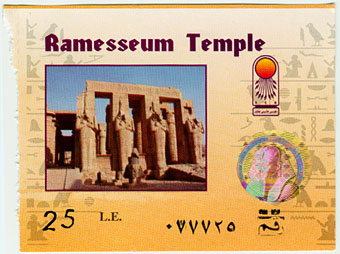


| — TUESDAY 15 JANUARY 2008 — LUXOR - WEST BANK, EGYPT — 19TH DYN. NEW KINGDOM — |

|
||||||||
 |
||||||||
|
||||||||
Our first stop was the Ramasseum. As soon as someone become Pharaoh, they start work on two important legacies. Their tomb and their mortuary temple.
This is the mortuary temple of Ramses II (1279-1213 BCE New Kingdom), and if you were around soon after he died, you would have found a thriving complex with attendants ready to take your offering to the now neter Ramses. There must have been land allocated for the upkeep and sustenance of the temple.
It was originally called the House of Millions of Years of Usermaatra-setepenra that unites with Uast-the-city in the domain of Amun. |






|
|||||||
 |
Built at the apogee of Ancient Egypt's power and glory, his extraordinarily long reign, the wealth available in the state coffers, and, undeniably, the pharaoh's personal vanity meant that Ramesses, of all the ancient rulers, left what is perhaps the most indelible mark on the country. |
|||||||






|
||||||||
The pylons and outer walls were decorated with scenes commemorating pharaoh's military victories and leaving record of his dedication to, and kinship with, the neters.
In one scene, Ramses spotlights the Battle of Kadesh (ca. 1285 BC); more intriguingly, however, one block atop the first pylon records his pillaging, in the eighth year of his reign, a city called "Shalem", which may or may not have been Jerusalem. |







|
|||||||
|
||||||||
| INTRO | TOUR INDEX | MAPS | TIMELINE | DIG DEEPER | ABOUT | CONTACT |
except as indicated, all content: writing, artwork, video, audio and photography
copyright 2008 Philip Brautigam — BE SEEN MEDIA
all rights reserved
THANK YOU FOR VISITING ULTIMATE EGYPT AT NEFERTUM.COM




